The IWC Deep One, the Over-Engineered Uber-Mechanical Dive Watch
A rare and ultra-engineered dive watch true to the 1990s ethos of IWC.

The fourth entry in The Collector’s Corner sees us returning to IWC, and though the company might best be known for its pilot’s watches, we are taking a plunge into the depths today. There are dive watches, and there are DIVE watches – the latter refers to watches that are so over-engineered that they are basically a piece of survival kit in their own right. The IWC Deep One is a DIVE watch, and it is our subject today. And it’s one of the most fascinating, instrumental, and collectable watches of the brand.
Background
We took a look at IWC’s history leading up to the quartz crisis in our first post in The Collector’s Corner before we dove deeper into the pivotal role Günter Blümlein played in shaping what we know as the modern IWC. Instead of treading that same ground (or water – ok, I’ll stop with the puns now!) again, let us look at some lines of sports watches that emerged in this era.
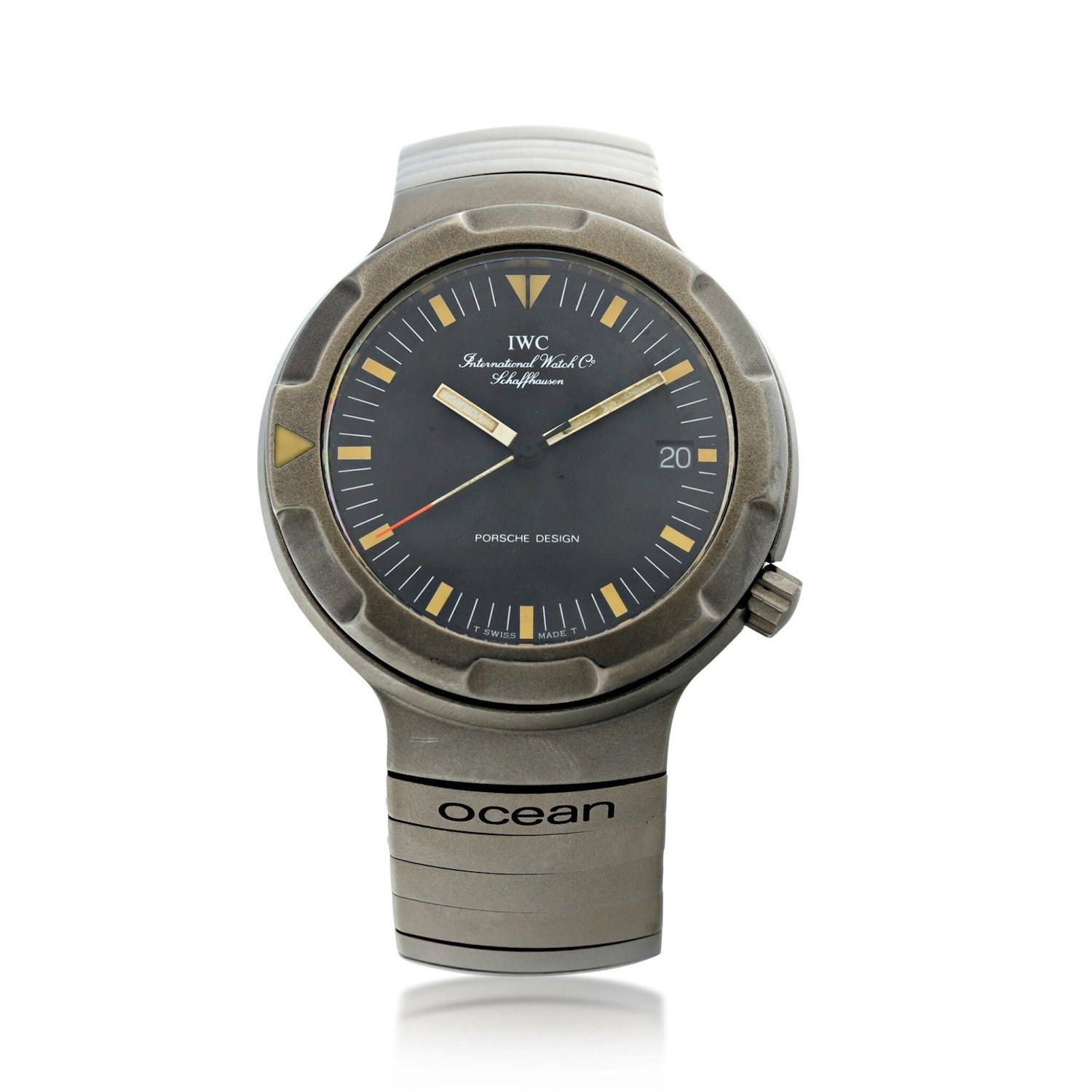
IWC’s collaboration with Porsche Design was its saving grace after the onset of the quartz crisis. Starting with the Compass Watch, an avant-garde integrated bracelet watch made entirely of aluminium, the watches in the Porsche Design collection cemented IWC’s stature as an innovator in the watch space, particularly when it came to using sci-fi materials. Along with the bread-and-butter quartz and base mechanical models that enabled IWC’s financial viability, the GST served as a launchpad for several halo efforts such as the 1980 Titan Chronograph, the world’s first production titanium wristwatch, and the 1982 Ocean 2000, a record-breaking dive watch that was so robust it was also commissioned by the German navy.
After IWC’s 20-year collaboration with Porsche Design came to a close in 1997, it was clear the company needed something to fill the gap in its product portfolio. The GST was IWC’s solution. Announced to the public in September 1997, the collection was named after “gold, steel, titanium”, the three case metals in which the collection would be offered. The GST line spanned chronographs, alarm watches, and the GST Aquatimer, the only model in the collection with an external rotating bezel. In 2001, additional complications were added, namely the rattrapante chronograph and the perpetual calendar, before the collection was renamed the “Aquatimer” in 2004, a development that also saw all complications but the chronograph disappear from the line-up.
A brief look at IWC’s dive watches
The archetypal dive watch was born in 1953, with the arrival of the Blancpain Fifty Fathoms, the Rolex Submariner and the Zodiac Seawolf. Without spending any time on the debate of which of these watches came first, suffice to say that IWC was late to the party. The company’s first true dive watch was the Aquatimer ref. 812 AD of 1967; it was water-resistant to 200 meters with an inner rotating timing bezel and a supercompressor-style double crown case.
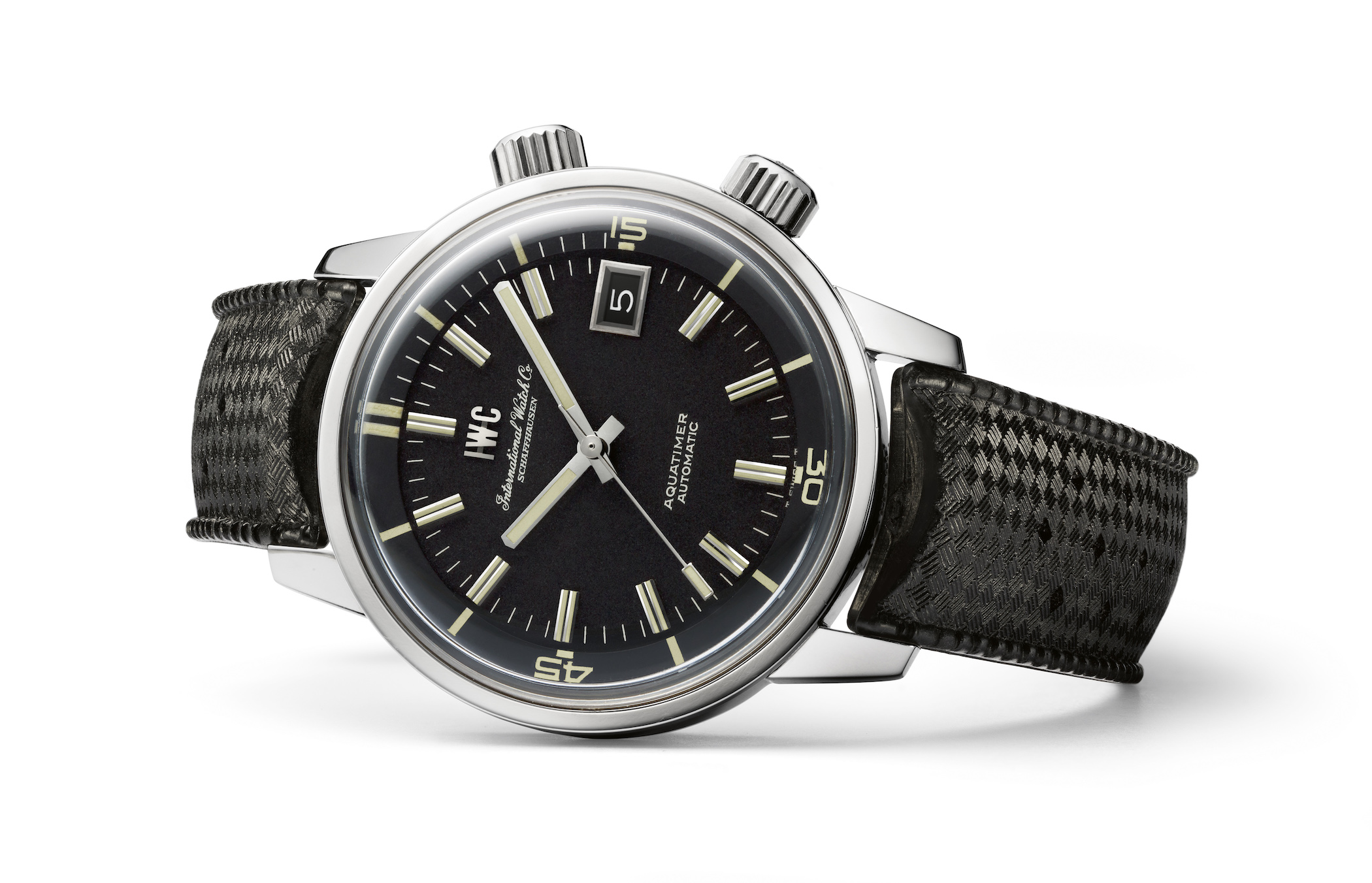
With the dawn of the Porsche Design era in IWC’s history and more solid financial footing, IWC developed the Reference 3500, the Ocean 2000. This was a radical watch – crafted entirely in titanium, with an integrated bracelet to match and water resistance of 2,000 meters – the Ocean 2000 was an engineering feat. What’s even more impressive is that the substantial water-resistance was achieved without the use of a helium escape valve and within a thin, compact case. Following the company’s ethos, the engineers reasoned that there was no need for a helium escape valve if the watch was designed so well that helium didn’t enter in the first place (take that, Rolex!).
The IWC Deep One Reference IW3527 – The basics
When you take a first look at the IWC Deep One, you could be forgiven for thinking that you were looking at some kind of chronograph. Three crowns, check. Centrally mounted hands, check. The truth is actually far more interesting, but let’s get the specs out of the way first.
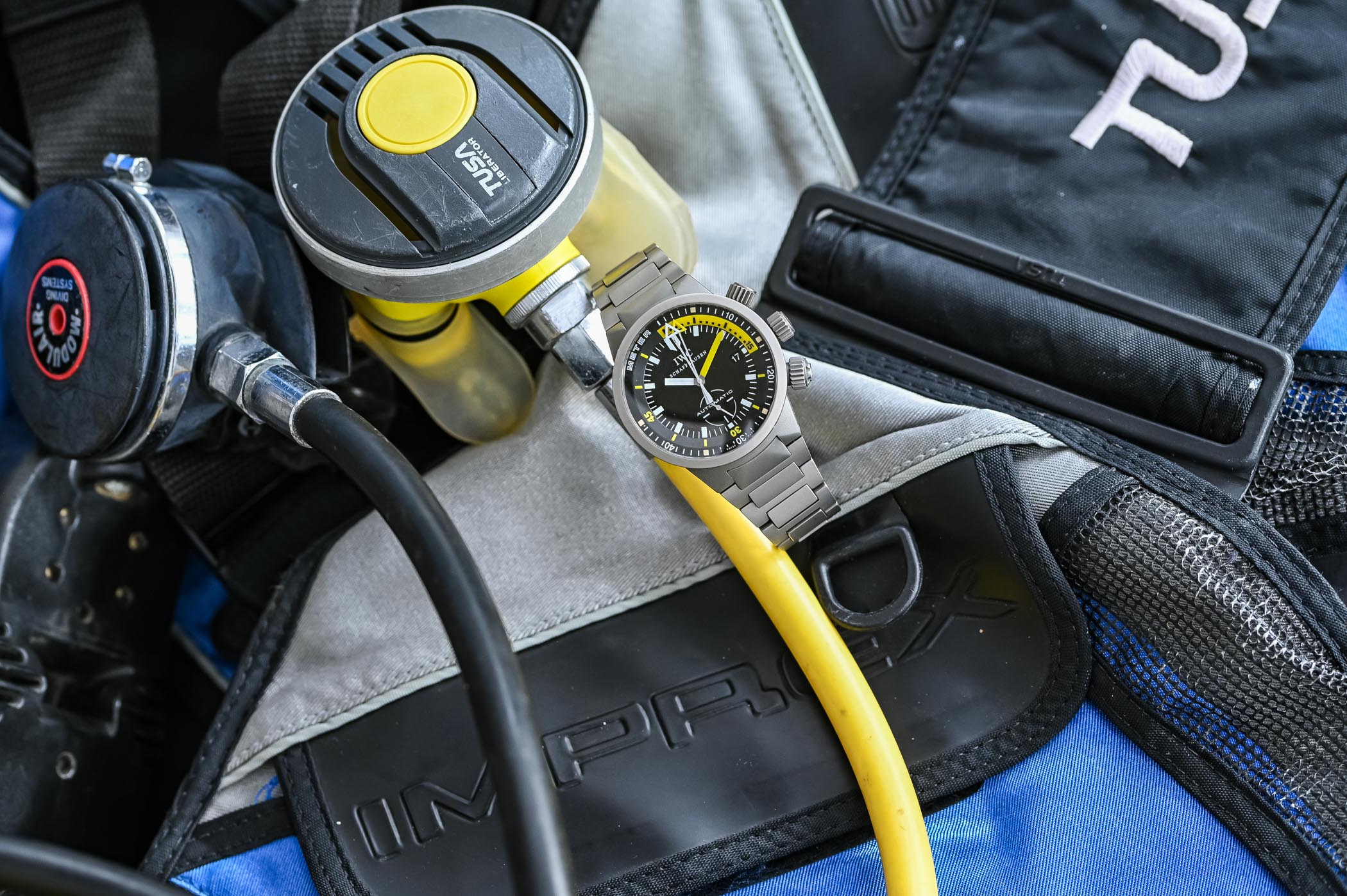
Born in 1999, the Deep One measures 42.8mm in diameter 14.75mm in height. There is something incredibly purposeful and industrial about the watch, which is heightened by the dark tone of the bead-blasted titanium that is used for all external surfaces. The case middle has a bit of a tuna-can look: the sides are sheer, and the case looks rather like a canister to which lugs have been welded on. In profile, the lugs themselves are short and angular, jutting sharply out from the case, with a slight downward slant that resembles that of the lugs of a Patek Philippe 3448 (I know, strange comparison!). In short, the look is unabashedly tool-like.
The lugs continue seamlessly in a bracelet design borrowed from the GST collection. The two-link bracelet design features prominent H-shaped main links held together with narrower rectangular links. The integrated bracelet tapers from the lugs to a twin-trigger folding clasp. A highlight of the bracelet is the quick-release system: each of the links has a small dimple on its underside. Using the tools supplied with the watch, the dimple can be depressed, which releases the bar holding the link in place.
Coming to the dial, the first thing you notice is how deep it is. Let’s start from the inside and work our way out. IWC’s no-nonsense white on black printing is the star of the show – the look is functional and highly legible. A date window is tucked away neatly (and discretely, thanks to white on black printing) at 3 o’clock. Unconventionally for a dive watch, there is a small running seconds indicator at 6 o’clock. Moving to the dished flange around the dial, we have a traditional rotating countdown bezel. The decision to use an internal rotating bezel was a conscious one: internal bezels are protected from accidental adjustments to the dive timer and are, in theory at least, safer. Last but not least, we come to a track that is labelled “METER” and goes up to 45. This is the depth display, and it can be read in conjunction with the two skeletonized arrow hands at the centre.
Of the two hands, the one in white measures the diver’s current depth and rotates clockwise as the diver descends and counter-clockwise as the diver ascends. The yellow hand, on the other hand, acts as a measure of the maximum dive depth. Basically, whereas the white hand can move up or down the depth gauge, the yellow hand sticks in place until a new max dive depth has been achieved.
Now, about the three sharpy-knurled crowns of the IWC Deep One IW3527, also in titanium. The top-most crown is used to set the dive bezel. This crown is unidirectional and has one-minute clicks. IWC developed an additional fail-safe system to prevent actual shortening of the dive time: when the watch is submerged beyond several meters, the external pressure acts on the crown and deactivates it. This crown has another trick up its sleeve. Pressing it resets the maximum depth gauge. The middle crown is engraved with IWC’s historical fish symbol (the sought-after fish crown) and is used to set the time and date. Finally, we come to the lower crown. Pushing the crown resets the calibration of the depth hands to zero, which becomes necessary for high-altitude diving (think mountain lakes). Close inspection of the crown reveals nine small holes drilled into it. This is the Deep One’s true party trick and is the secret behind the depth gauge.
Underpinning the depth gauge is a mechanism named after the French scientist Eugène Bourdon in 1849. A Bourdon tube is a thin-walled metal tube that allows the entry of pressure into it: as pressure enters the device, the metal tube straightens. This movement is transmitted via a lever to the dial side of the device displaying the pressure.
To translate the same principle to a depth gauge: instead of letting pressure enter the gauge, it allows water to enter a sealed tube – as the tube fills with water, it straightens; in shallower water, it coils tighter. The movement of the tube is transmitted via a toothed rack system (like you would find in a retrograde complication) to the dial of the gauge. The maximum depth reading of 45 meters of the Deep One is linked to the Bourdon tube’s characteristics – the system is most accurate at depths of 40 meters or less.
The choice of the base movement was a critical one – the ébauche had to be slim enough to allow for the depth gauge mechanism to be mounted dial-side and robust enough for the Deep One’s rough-and-tumble vocation. This is also the reason why IWC engineers opted out of a central seconds hand – the resulting movement would simply have been too thick.
Both Jaeger-LeCoultre and IWC were headed by Günter Blümlein at the time, which allowed assets to be shared between the sister brands. IWC decided to use a JLC calibre 891, a fine and thin automatic base movement with 36 jewels, beating at 28,800 beats per hour over its 38h power reserve. With IWC’s modifications, the movement became the IWC calibre 8914.
Why should you consider the IWC Deep One?
The IWC Deep One IW3527 was produced for only two short model years, and though there are no official production figures, the estimates fall well short of 1,000 pieces. Though it is not clear why production was halted a mere two years in, it is likely that the manufacture of the full titanium case and complicated mechanics was simply not economical compared to watches in precious metal, even given the stately price of EUR 10,600 in 1999 (just under EUR 16,000 today after adjusting for inflation). The rarity and niche appeal of the Deep One has led to considerable appreciation, particularly in the past three years. Whereas this reference IW3527 could be had for under EUR 10,000 three years ago, expect to pay more than double that for a full set now (expect around 25k). IWC continued the lineage of its depth gauge dive watches with the Aquatimer Deep Two of 2009, and the Aquatimer Deep Three of 2014. However, the modern Deep iterations were produced in far higher volumes than their namesake. Also, they seem to follow the maxim of “bigger is better” and, at 47mm-48mm, are far too large to be worn in a day-to-day setting (by yours truly, at least!).
Generally, when talking about dive watches, the conservation often steers toward the depth rating of the watch in question. A common viewpoint is that a higher depth rating automatically implies a better dive watch. 300 meters, 500 meters, 1,000 meters; after a point, all these measurements become academic, especially considering that the safe dive depth for recreational diving tops out at 40 meters. The Deep One, rated at a “mere” 100 meters, wouldn’t win this fight.
At the same time, however, the Deep One has to be one of the most purpose-built dive watches the world has seen. Every aspect of the design seems to have been pored over. Take the case material, for example. Titanium is notoriously difficult to machine but also has the same strength as all but the strongest steel alloys while being 45% less dense, leading to a terrific strength-to-density ratio. Titanium is also resistant to corrosion (always a nice thing to have in dive watches) and is hypoallergenic. The fact that its gunmetal hue looks cool also doesn’t hurt! The dial is a case study in legibility – white on black print makes for a clean look, despite all the information on display. The most important markers are highlighted in signal yellow, which is certainly functional, but also adds a splash of colour to what would otherwise be a design some would go so far as to call boring.
In short, everything about this watch is designed in such a way as to keep you alive in the event your electronic dive computer fails. I think there’s something comforting about the fact that an obsolete piece of timekeeping technology paired with a depth-measuring technology from the mid-19th century has been built to outlast the most advanced technology.
The list of accessories the Deep One came with also hammers that point home. The full set came with your usual bonuses, such as an additional textile strap and bracelet sizing tools. Still, the true highlight was an aluminium pump that could be used to check the correct functioning of the watch’s dive counters before a dive! IWC really spared no expense to make the ultimate dive watch. And this combination of ultra-instrumental conception and rarity makes for a true collector’s piece.

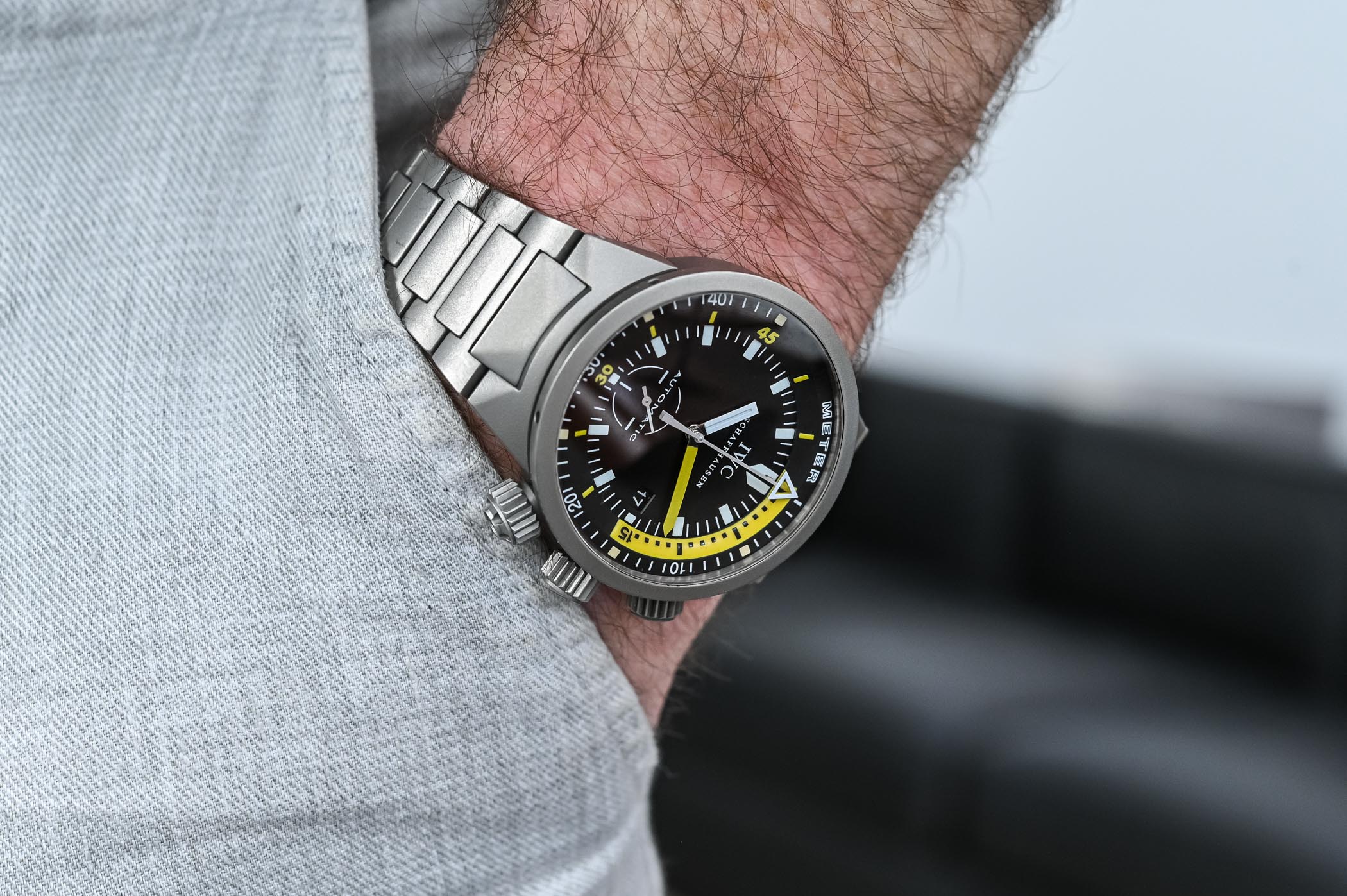
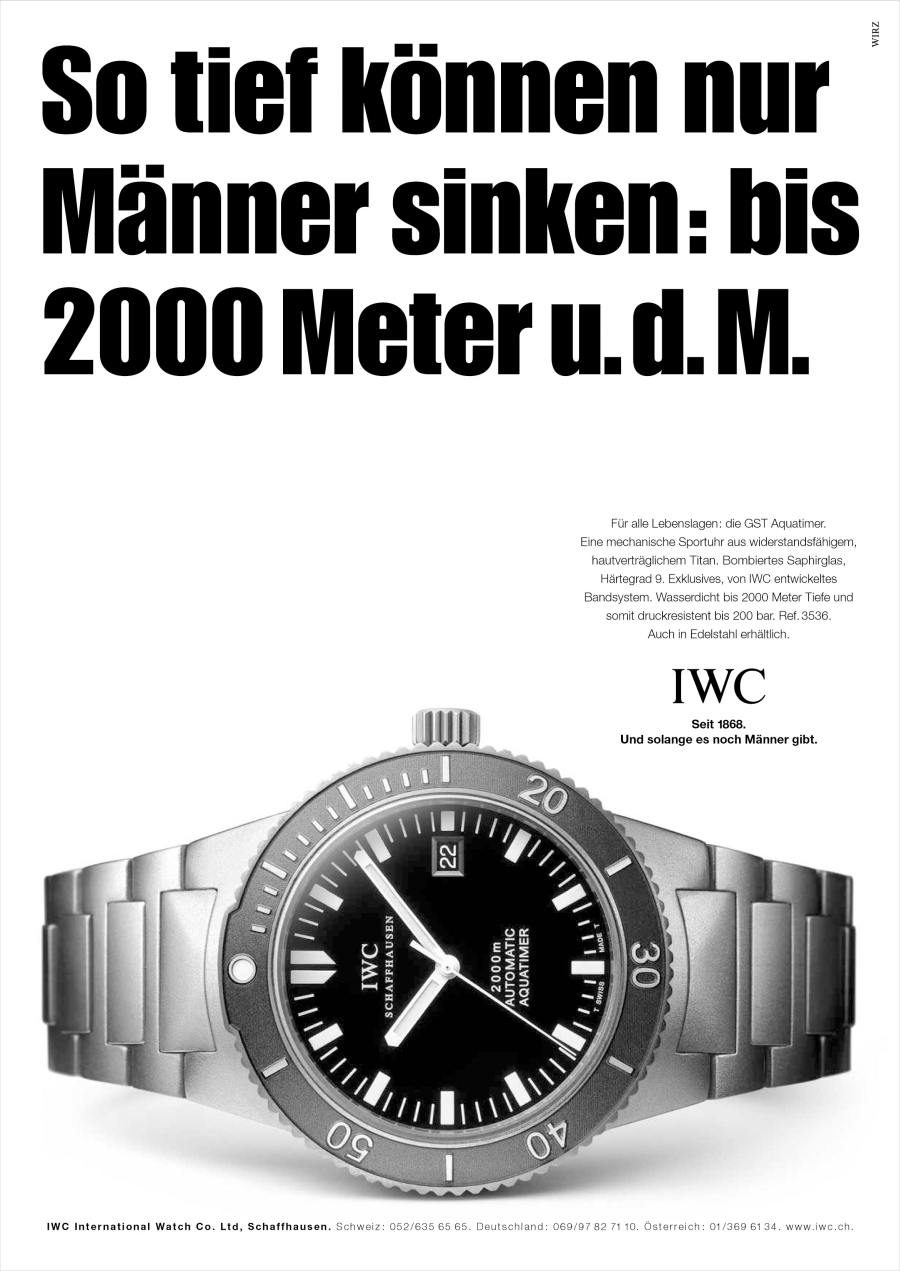
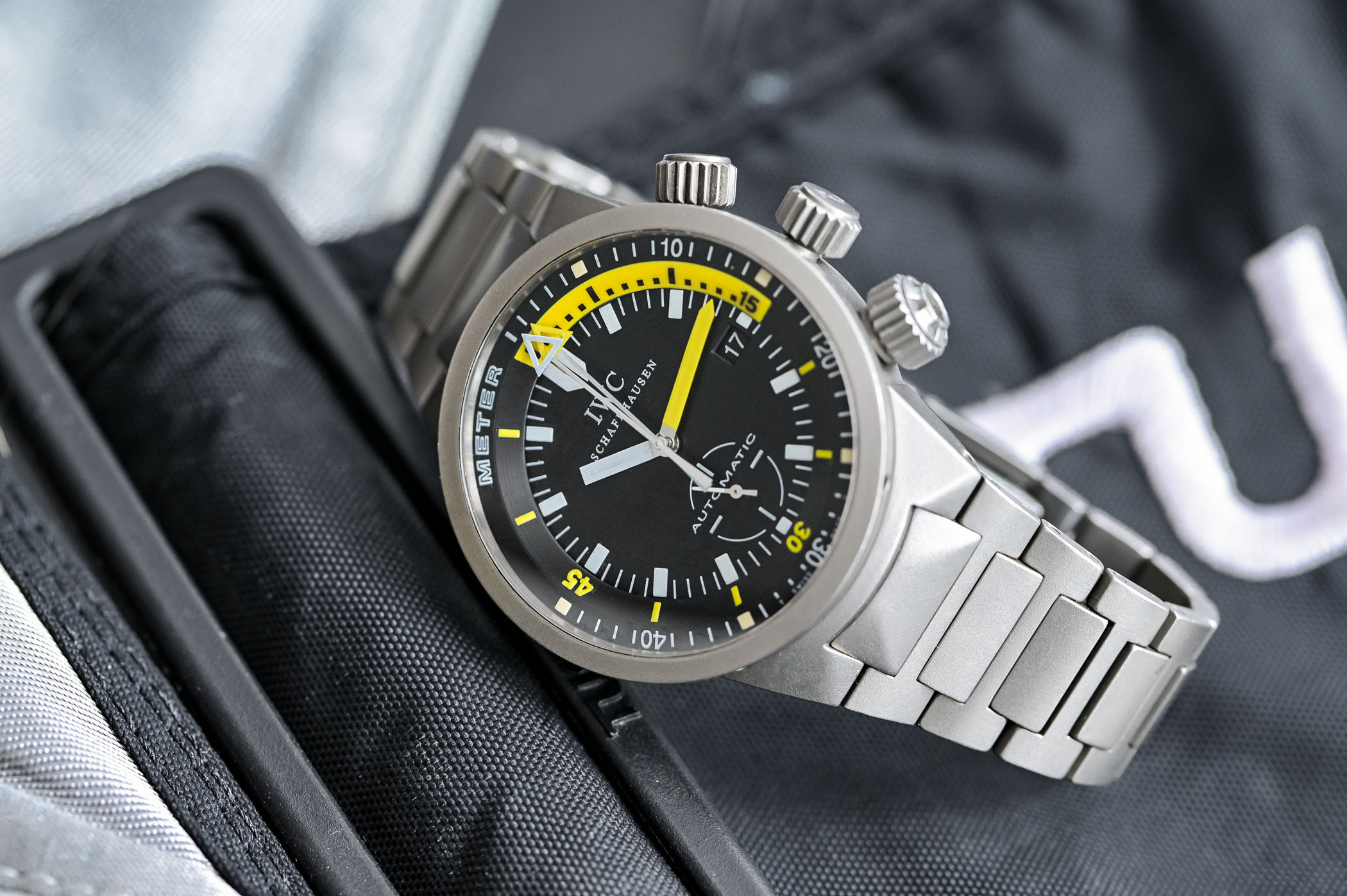
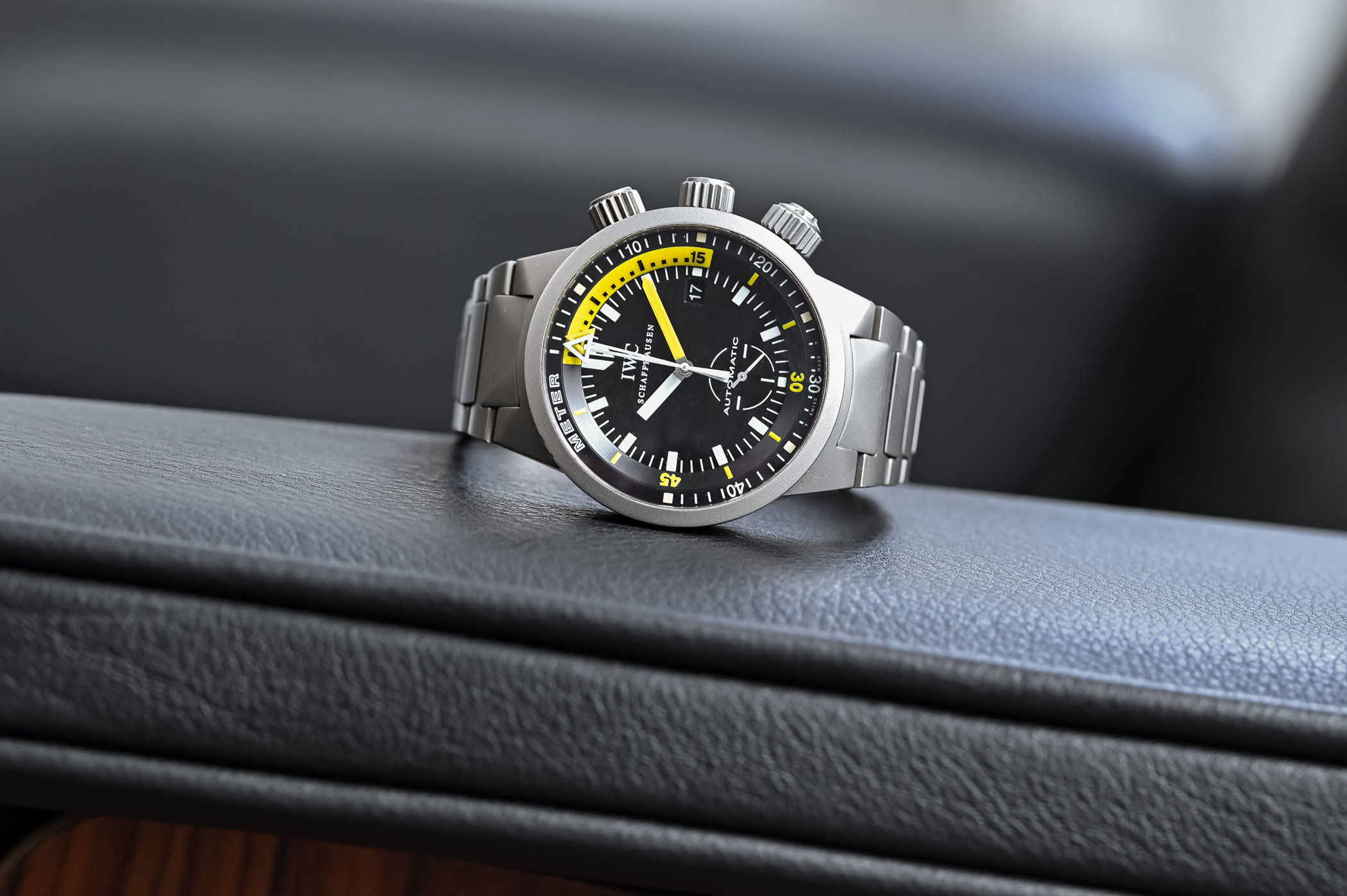
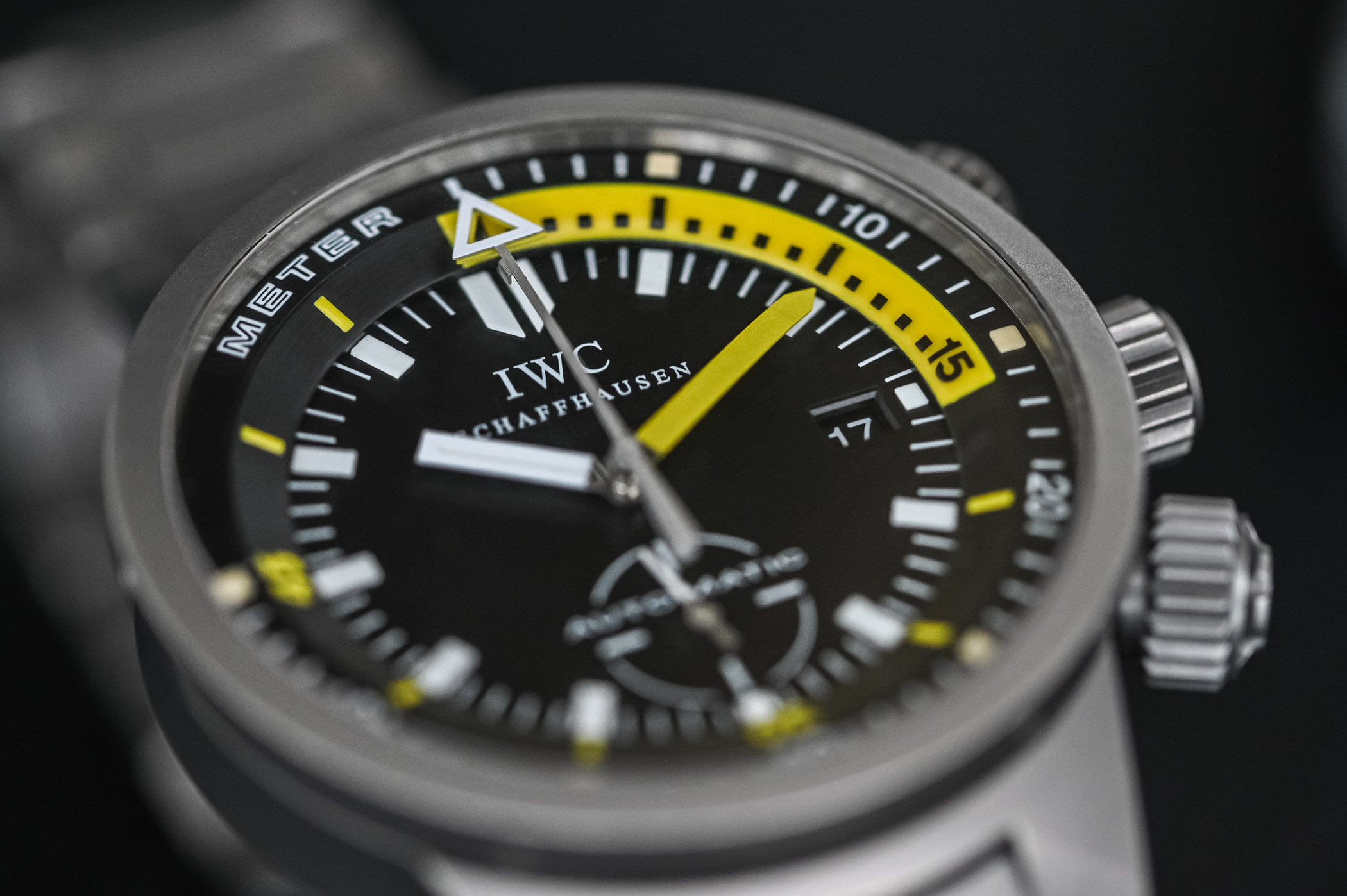
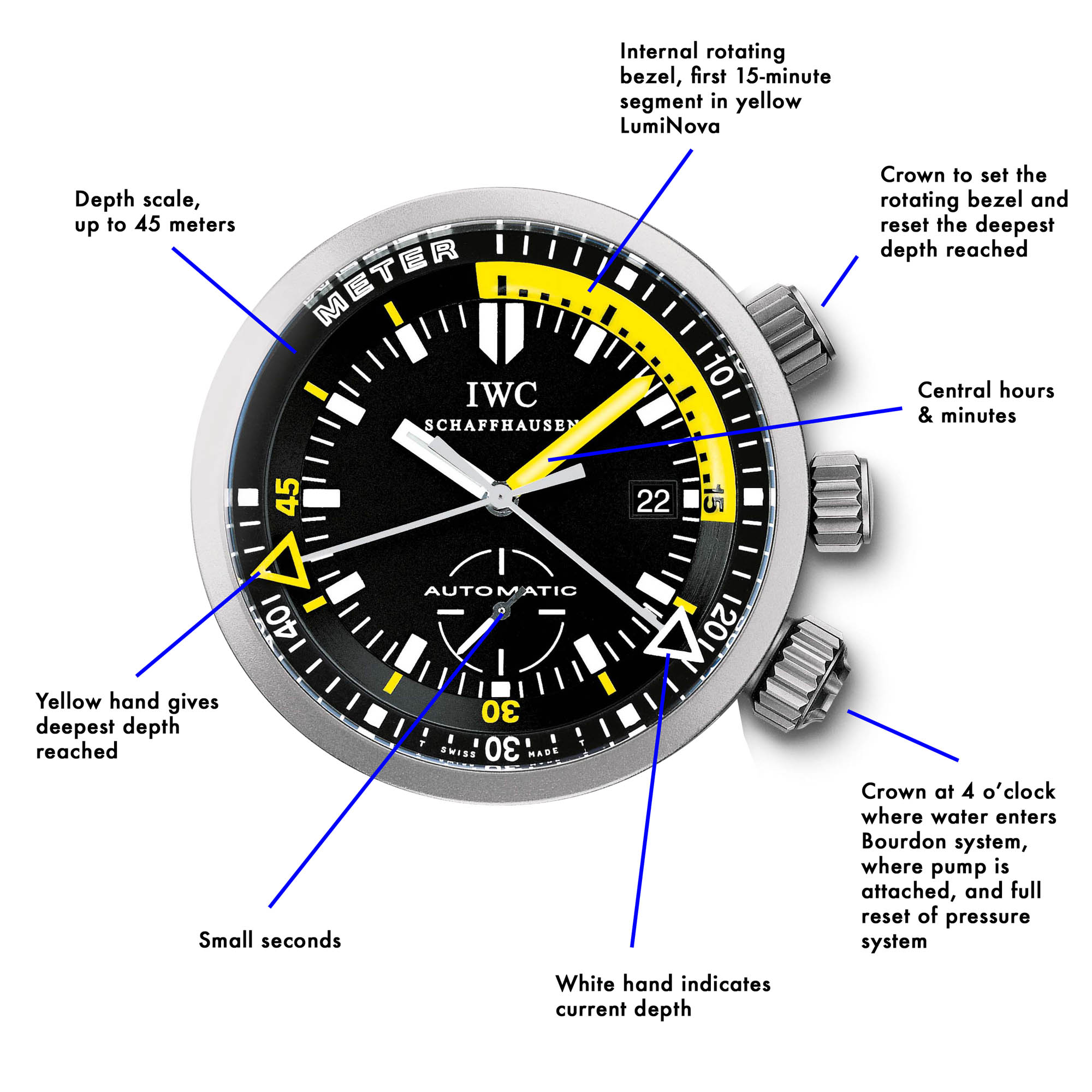
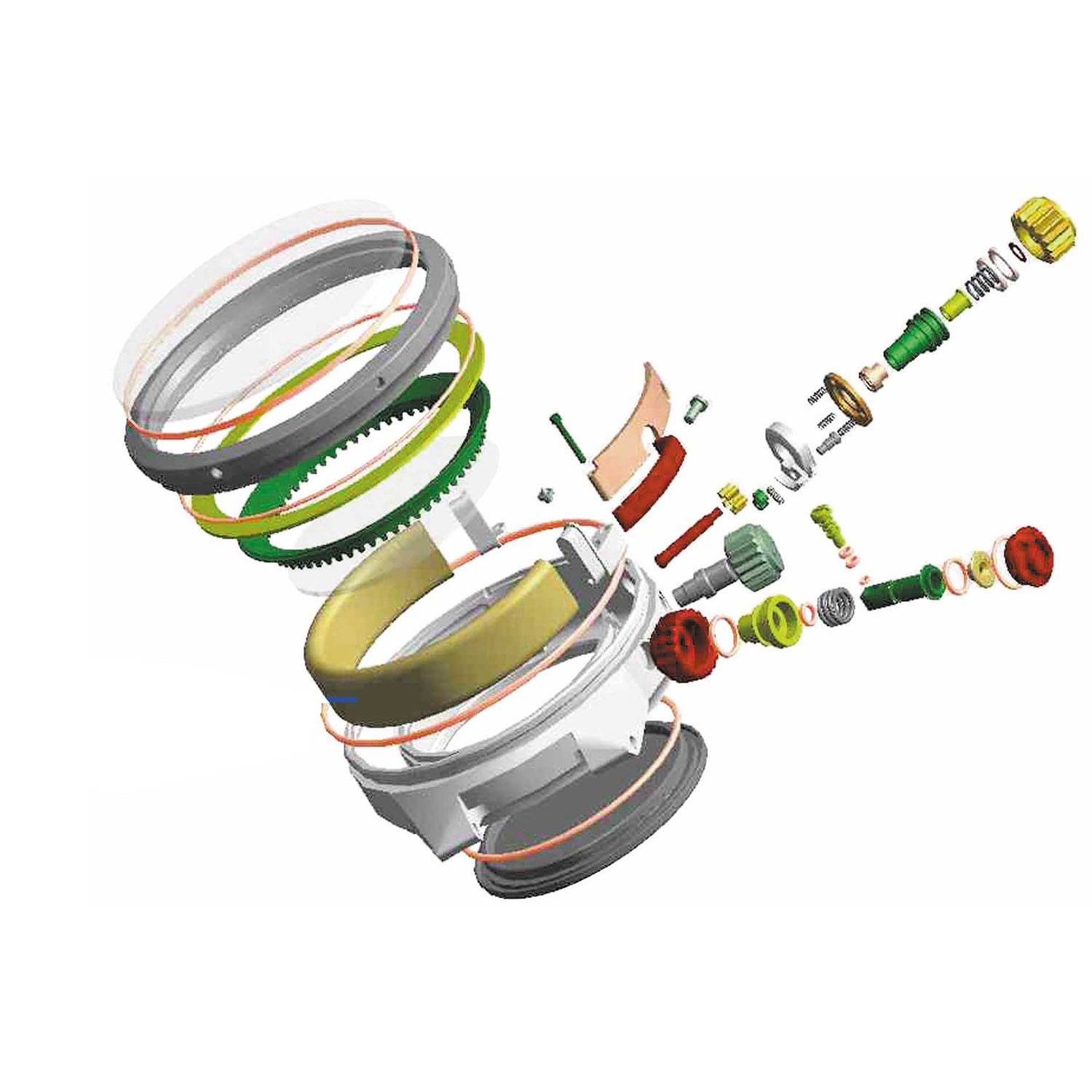
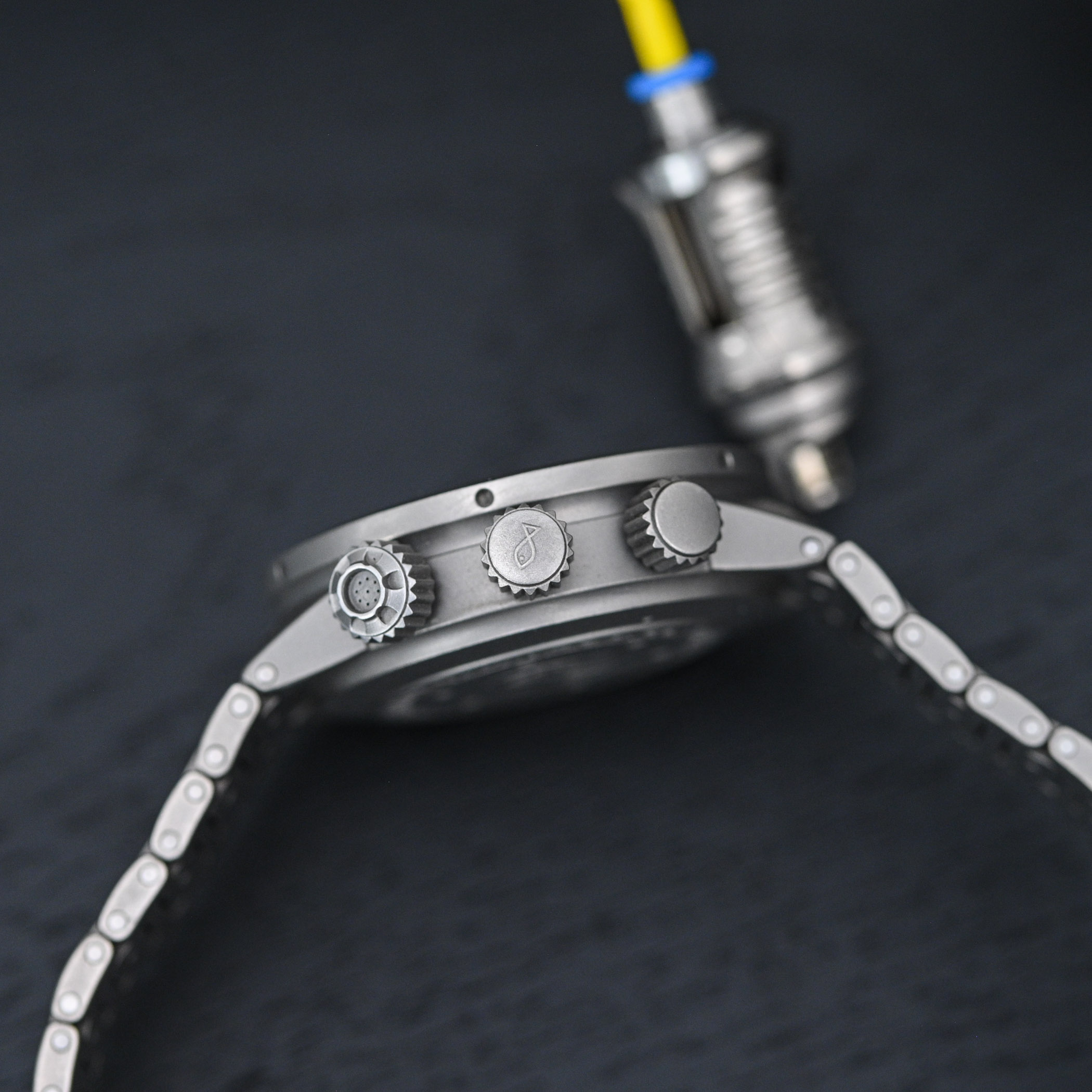
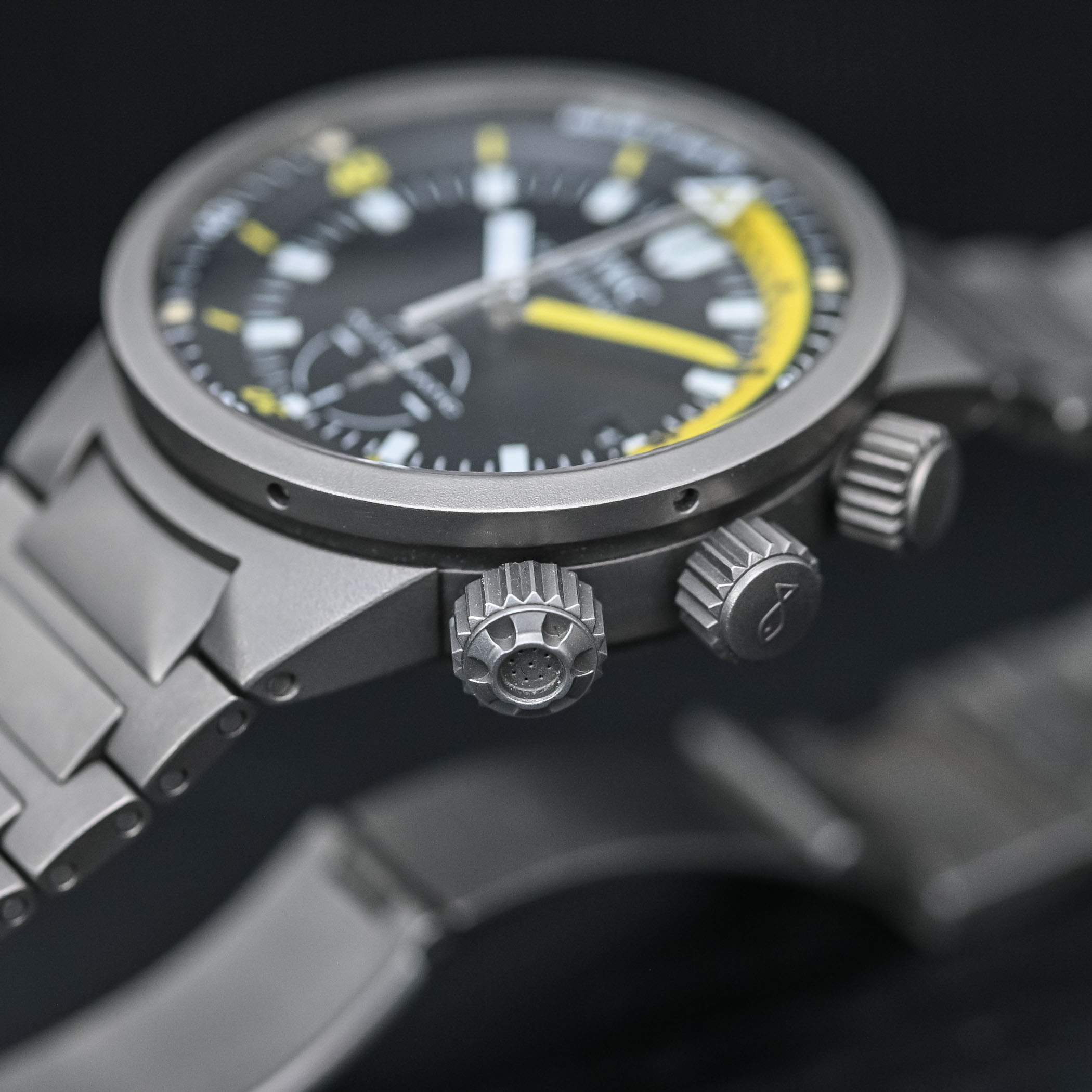
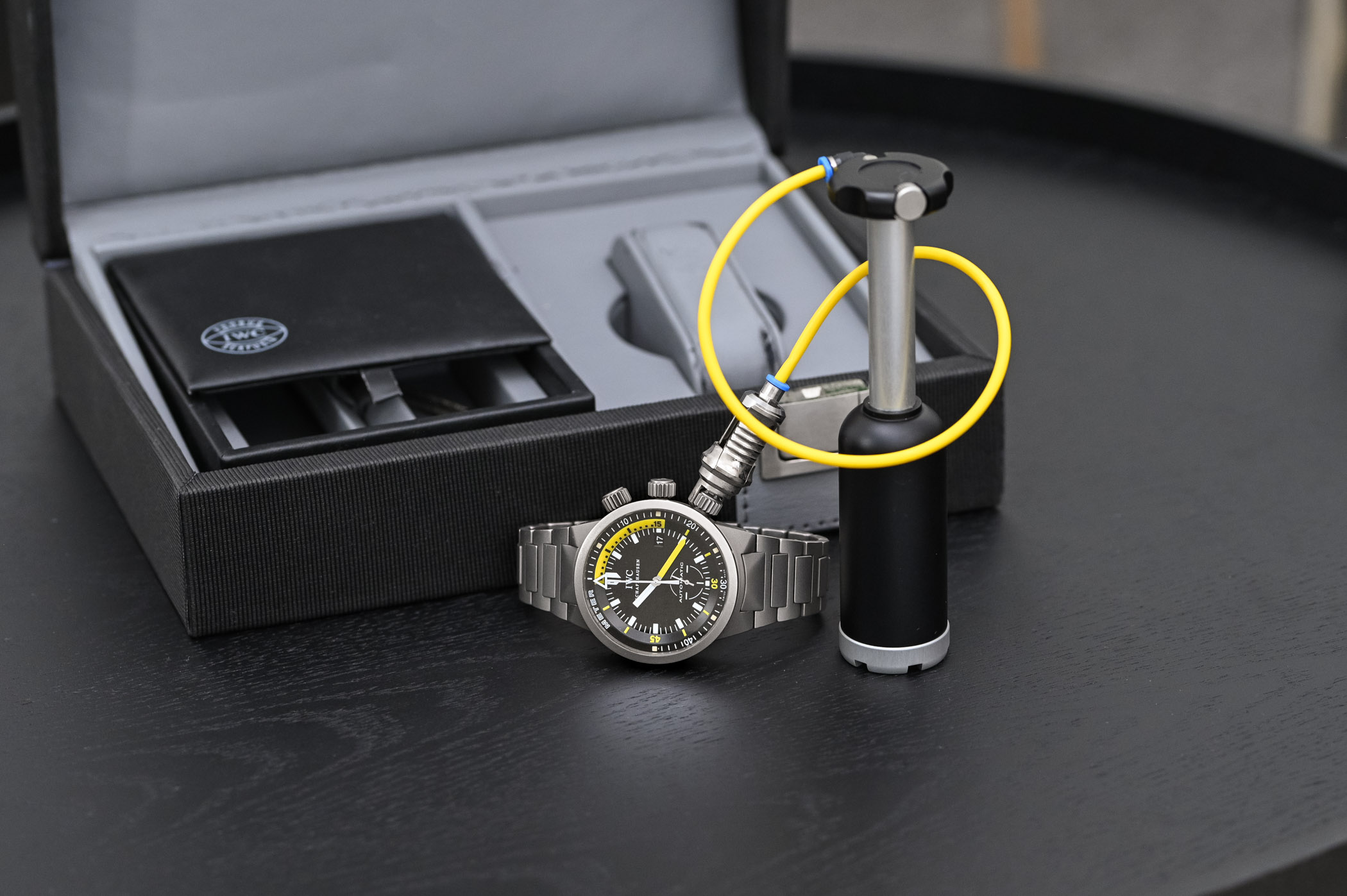
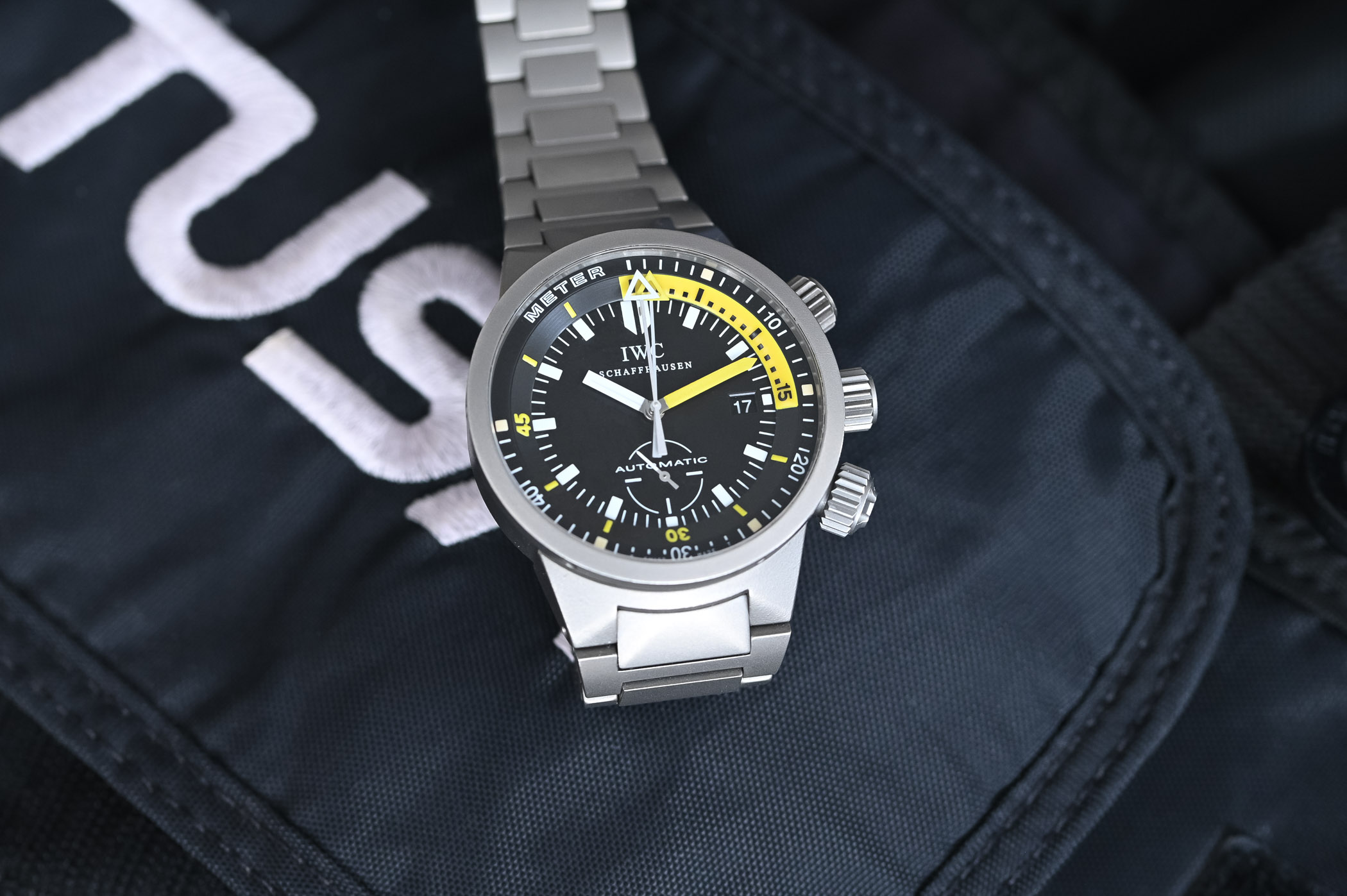

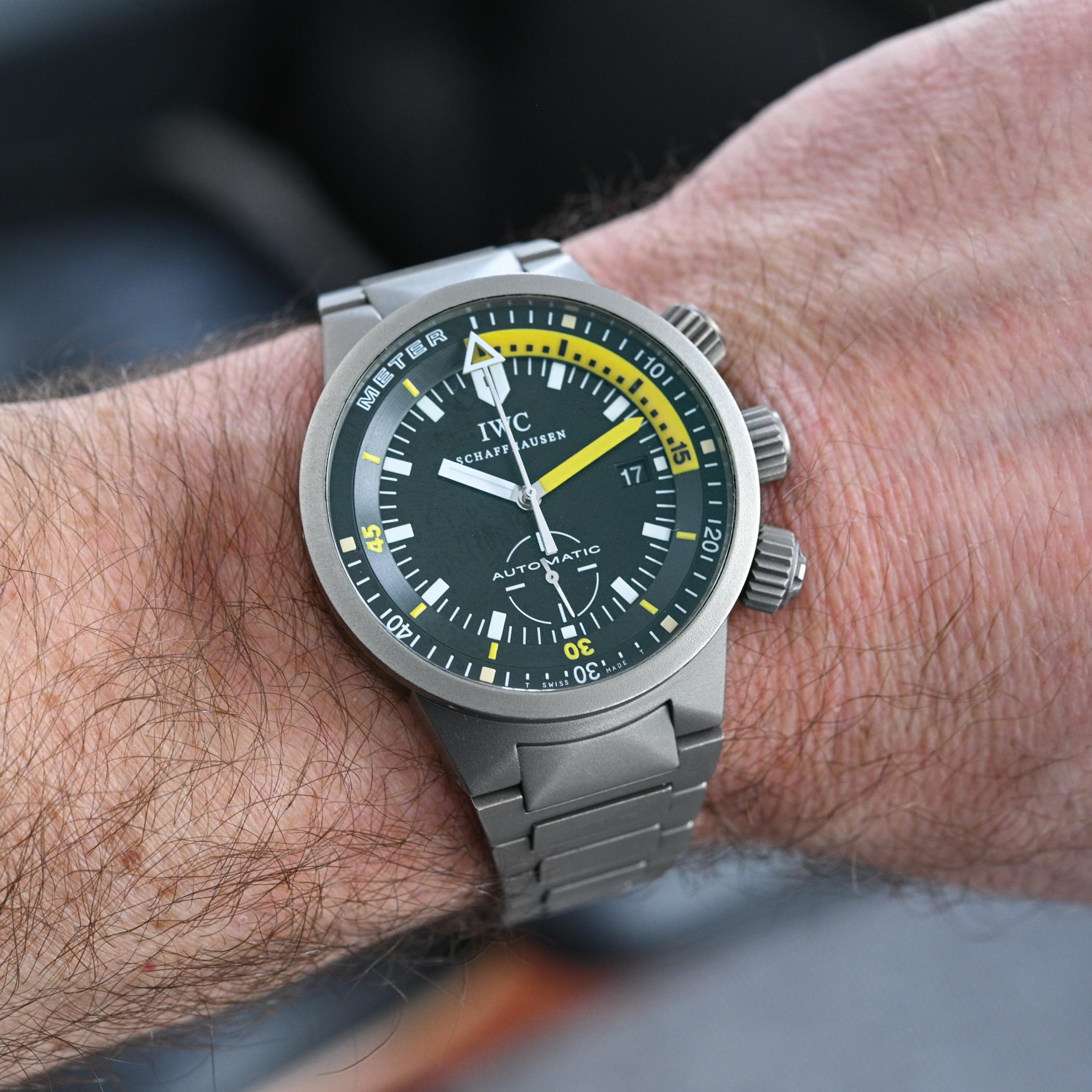
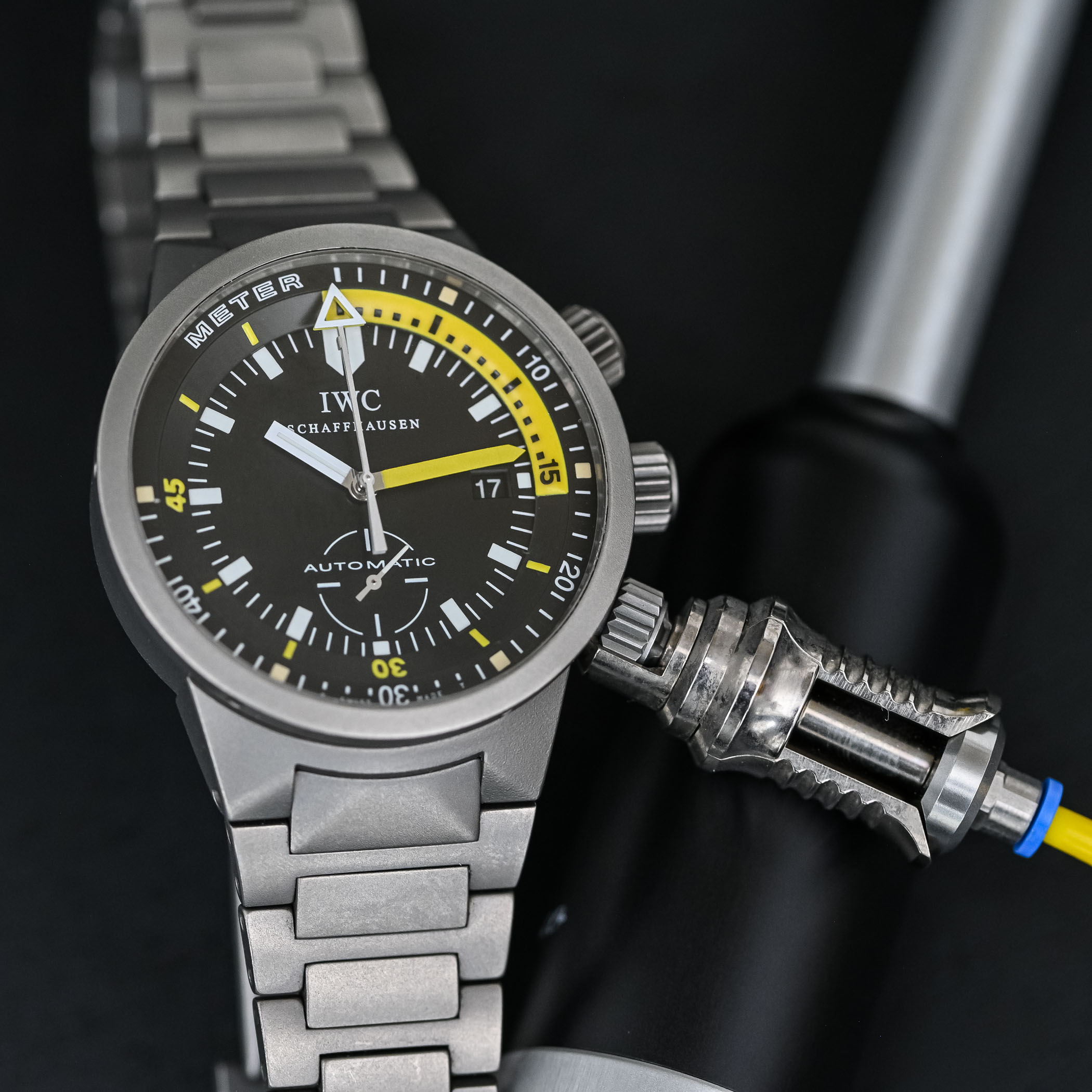



4 responses
Nice to have a different brand featured as a DIVE watch.
Thank you.
Los diminutos agujeritos de la corona deben obstruirse con bastante frecuencia en el mar, con microalgas y plancton. Impidiendo así, el correcto funcionamiento del medidor de profundidad. No es de asombrar si contamos con que es un diseño de hace más de 30 años. La entrada a los sensores electrónicos de los Citizen Diver, por poner un ejemplo, tienen un diámetro mayor para impedir este problema. Como sea, este fué un gran reloj para el momento en que se fabricó. Un importante logro para IWC.
With all functionality there was a big let down for safety of divers. I can tell you first hand that watch failed because case could not be made waterproof reliable even for a first dive in shallow water. I know this is big claim but I stand by it.I had a privilege to work on IWC watches for many years.
Many thanks for this interesting and well illustrated article! I have been looking for mechanical dive watches with depth gauge, and was only aware of the one that Oris makes. Would be great if IWC brought this one back into production.